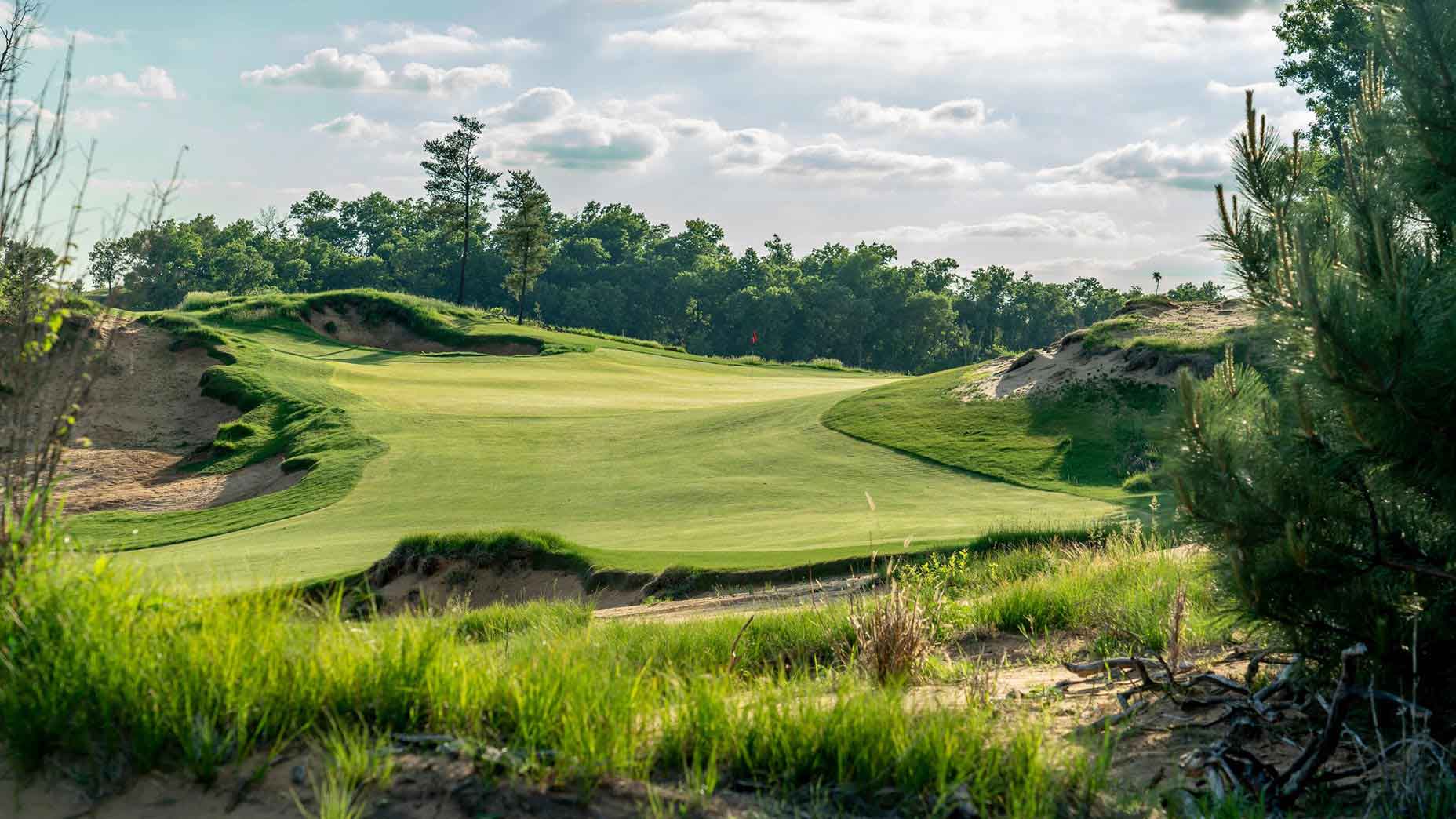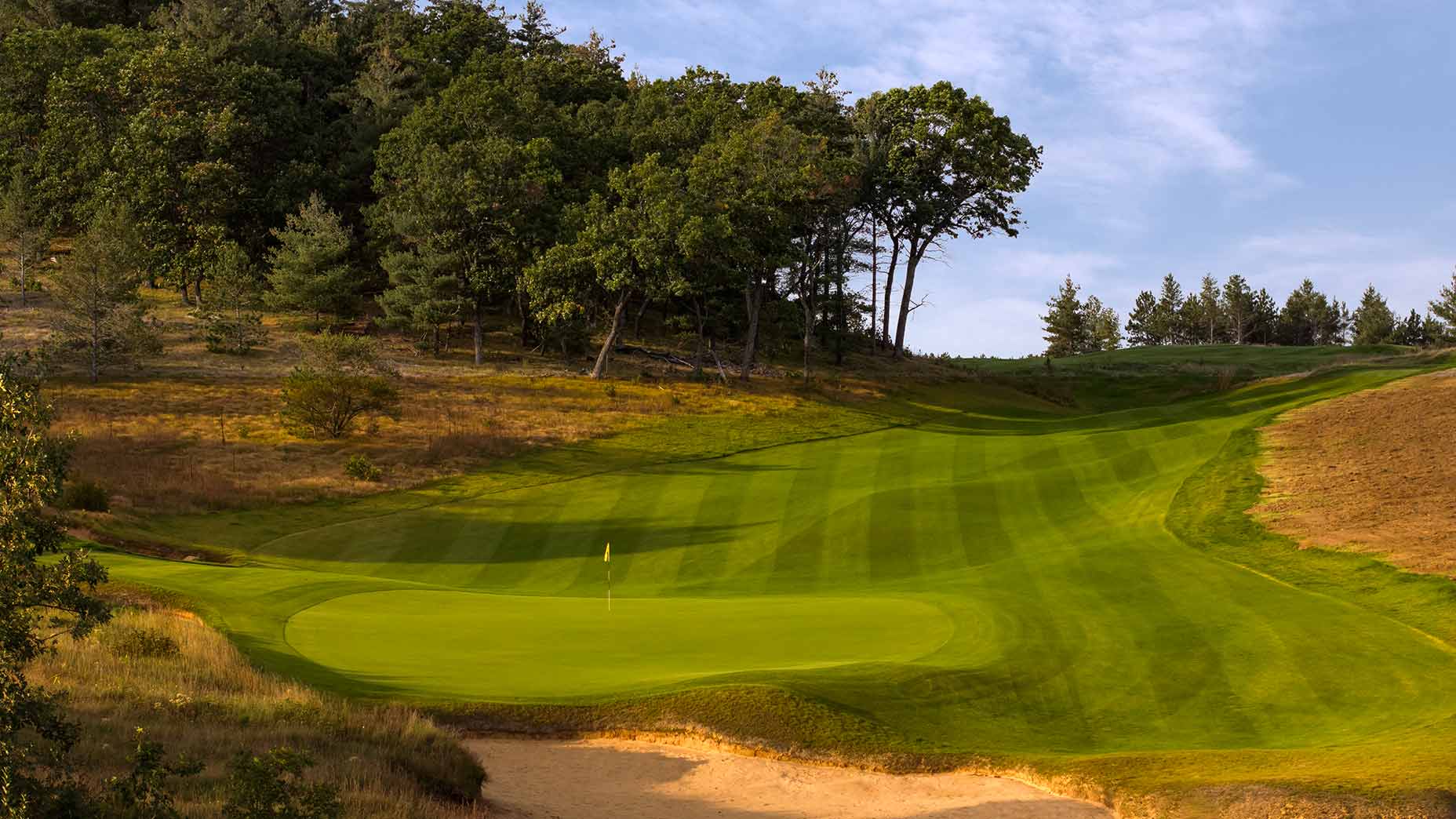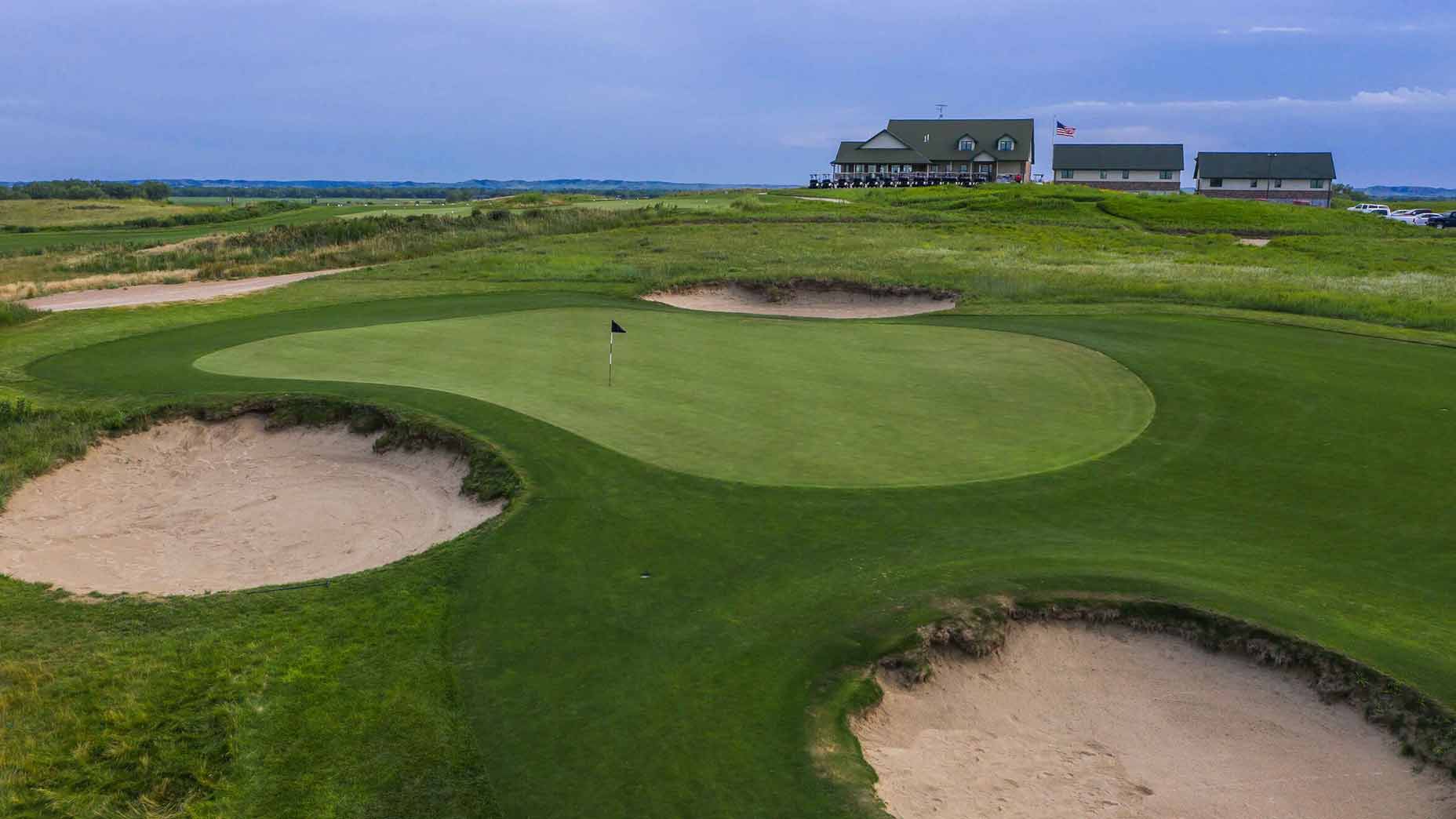There are seven courses in Canada. And four in Mexico and three in the Dominican Republic. There are one apiece in Bermuda and the Bahamas, too. For the first time, GOLF is adding additional North American courses to its Top 100 Courses You Can Play list. We have, quite literally, searched higher and lower for the best public golf.
Which also means that the number of newcomers since the last ranking, in 2017, has spiked — there are 43 first-timers on the list. Along with the 16 listed above that are beyond the U.S. border, there are two newcomers apiece in California, Indiana, Michigan, Mississippi, Oregon and Wisconsin, and one apiece in Alabama, Arizona, Florida, Maine, Massachusetts, Missouri, New Mexico, New York, North Carolina, North Dakota, Ohio, Pennsylvania, Texas, Utah and Washington.
“Expanding our reach means, for starters, you can find courses in prime condition at any time of the year,” GOLF’s architecture editor, Ran Morrissett, wrote in the May issue of GOLF Magazine.
Below, you’ll find the list of the 43 newcomers. Check out our complete list here.
The newcomers on GOLF’s 2021-22 Top 100 Courses You Can Play
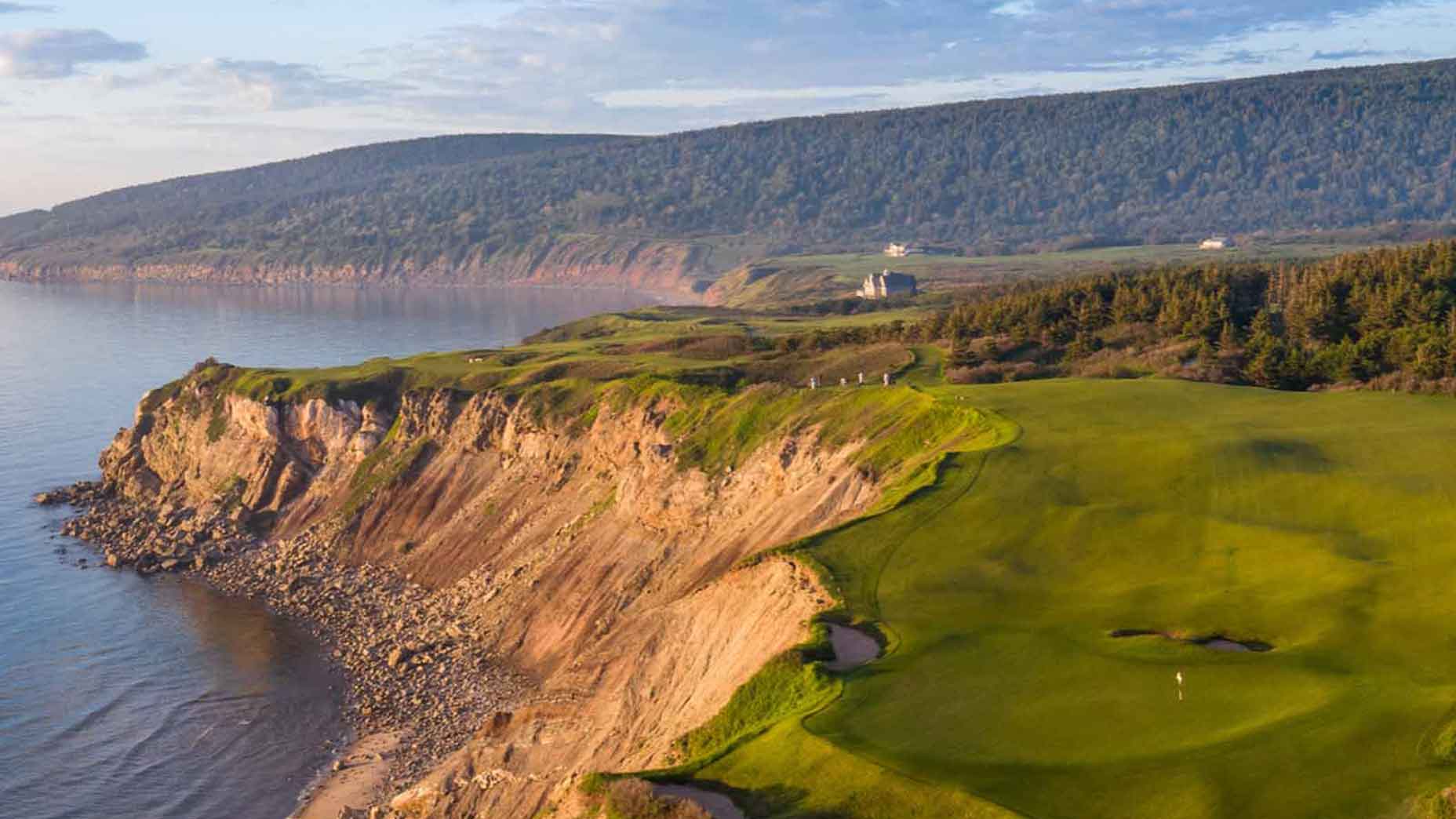
4.Cabot Cliffs
Inverness, Nova Scotia, Canada
Bill Coore/Ben Crenshaw, 2016
Canada’s top-ranked course, this five-year-old Bill Coore/Ben Crenshaw design towers more than 100 feet above the Gulf of St. Lawrence, inspiring Pebble Beach-like awe. Most memorable is the trio of stunning closing holes, beginning with the 176-yard, par-3 16th, played out over the cliffs that give the course its name.
7. Casa de Campo (Teeth of the Dog)
La Romana, Dominican Republic
Pete Dye, 1971
Pete Dye’s personal favorite of all of his designs, Teeth of the Dog is flat-out gorgeous, with seven holes practically sunk into the Caribbean Sea. Despite its intimidating name, Teeth of the Dog entrances, starting with its superior collection of par-3s.
12. Cabot Links (Links)
Inverness, Nova Scotia, Canada
Rod Whitman, 2012
Developers Ben Cowan-Dewar and Mike Keiser handed over a rolling plot of coastal Nova Scotia terrain to Canadian architect Rod Whitman, and the result is Canada’s first authentic links. Whitman’s talent for adding micro-contours in and around the greens is unsurpassed but are overlooked here because the views are so spectacular.
17. Banff Springs
Banff, Alberta, Canada
Stanley Thompson, 1928
With the steep slopes of Mt. Rundle rising on one side and the Bow River flowing on the other, Banff showcases the work of Canada’s greatest architect on perhaps the greatest site he was ever given. The staggering setting makes a fitting backdrop for Thompson’s myriad of artistic touches, including inventively shaped bunkers, replete with fingers and islands and flashes, that count among the hallmarks of his style.
18. Cap Cana (Punta Espada)
Punta Cana, Dominican Republic
Jack Nicklaus, 2006
Hollywood never conjured bluer lagoons than those that come in play on this Nicklaus Signature Design, a former stop on the Tour’s senior circuit. The layout has the look of a tropical postcard. But the pretty picture can be plenty penal. Take the 13th hole, a 250-yard par-3 that requires an Evel Knievel carry over an ocean inlet, with waves frothing against the cliffs below.
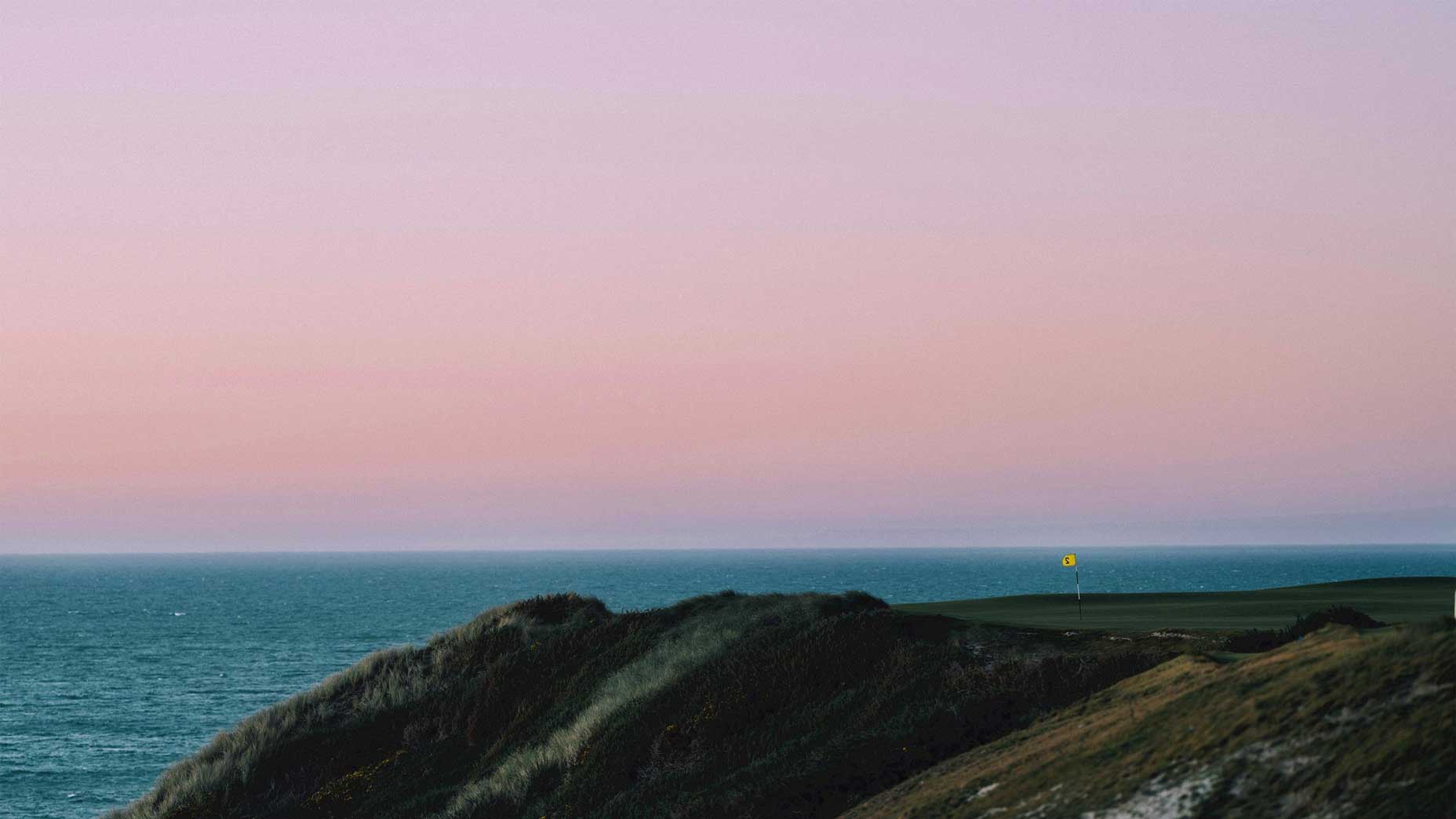
20. Sheep Ranch
Bandon, Ore.
Bill Coore/Ben Crenshaw, 2020
A masterpiece of routing, the newest addition at Bandon Dunes occupies the smallest plot of the property’s five 18-hole courses but boasts the longest stretch of coastline, with nine greens set on the seaside bluffs. Another striking feature is the absence of bunkers. Holes are framed instead by gorse, native grasses and a smattering of dead trees known as “snags.”
24. Jasper Park Lodge
Jasper, Alberta, Canada
Stanley Thompson, 1925
Located in a national park of the same name, the course offers arresting long views of the Canadian Rockies and stirring close encounters with the crystalline waters of Lake Beauvert. Thompson aligned fairways with the surrounding mountains and shaped green complexes with contours that mirror the outlines of the distant ridges.
25. Sand Valley (Sand Valley)
Nekoosa, Wis.
Bill Coore/Ben Crenshaw, 2017
After an opening tee shot from a massive dune dubbed The Volcano, Sand Valley bewitches players with firm fairways, majestic bunkers and one of the great punchbowl greens. Owner Mike Keiser said the land reminded him of a cross between Sand Hills and Pine Valley. Coore and Crenshaw more than delivered on that promise.
26. Pinehurst (No. 4)
Pinehurst, N.C.
Donald Ross, 1919/Gil Hanse, 2017
Renovating a course that rubs up against Pinehurst No. 2 is a brutal assignment because comparisons are inevitable. So, what did Gil Hanse and Jim Wagner do in 2017 when the task fell to them? First, they made sure that the course looked like it belonged on the same large swath of property as Pinehurst No. 2. A lot of work went into reconnecting the course to the ground and wiping away extraneous movement that had been added over the decades since Ross’ passing. Second, they studiously built a set of greens that in no way mimic No. 2’s but rather stand on their own, diverse merit.
28. Cape Breton Highlands Links
Ingonish Beach, Nova Scotia, Canada
Stanley Thompson, 1941
Set in the Cape Breton Highlands National Park, Highland Links features an unforgettably diverse playing experience, capped by a superior set of Thompson greens. The course’s set of par-5s (Nos. 6, 7, 15 and 16) is rightly considered among the best in all of golf.
29. Sand Valley (Mammoth Dunes)
Nekoosa, Wis.
David McLay Kidd, 2018
Architect David McLay Kidd, once known as a staunch defender of par, intentionally softened his approach here, following his grand success at the equally player friendly Gamble Sands. The wide, nearly unmissable fairways offer players multiple angles of attack into generous greens. The result? Mammoth Dunes is a welcome reminder that a great course can also be eminently fair and fun to play.
32. Mid Ocean Club
Tucker’s Town, Bermuda
C.B. Macdonald, 1921/ Robert Trent Jones Sr., 1953
This island course is known for its world-famous cape 5th hole, which doglegs left around Mangrove Lake. Drone shots flatten out just how high above the lake the tee really is — 50 feet (!) — and the thrill never wanes of selecting the correct line over the lake as you factor in the day’s wind. The golf lacks nothing as the course rotates from cliffs to hilly interior holes to the finisher back along the cliffs.
33. Sand Hollow (Championship)
Hurricane, Utah
John Fought/Andrew Staples, 2008
While the front nine is eye-catching, the back nine almost needs to be seen to be believed. Carved along the ridges of a lands-end plateau, it flows from one catch-your-breath vista to another. Aim and swing, then point and shoot.
39. Streamsong (Black)
Streamsong, Fla.
Gil Hanse, 2017
Like its Streamsong siblings, the Blue and Red courses, this rollicking design gambols through a most un-Florida-like landscape: the white dunes of a former phosphate mine. What sets it apart is its scale, with large, mounded greens, and fairways as wide as landing strips. Despite its size, the course asks subtle questions in the form of blind shots, cleverly placed bunkers and quirky contours that require the most of your imagination.
43. Mossy Oak
West Point, Miss.
Gil Hanse, 2016
On the site of a former dairy farm, Gil Hanse whipped up tempting short par-4s, some nearly blind tee shots and plenty of deceptive bunkering. The rolling terrain is easily walkable, and the firm, fast turf can lead to extra yards or leave you with a poor angle into the greens, many of which are complicated by serious contours and false fronts.

54. Ozarks National at Big Cedar Lodge
Holister, Mo.
Bill Coore/Ben Crenshaw, 2019
One of five big-name courses at Big Cedar Lodge, the wilderness resort built by Bass Pro Shops founder Johnny Morris, Ozarks National served as a change of scenery for Coore and Crenshaw. Known for their minimalist work in sand, the duo here brought their light hands to a landscape of dramatic limestone ridges, giving way to views of the surrounding hills.
56. Arcadia Bluffs (South)
Arcadia, Mich.
Dana Fry, 2018
Ever see a square green? It’s a rare but cool architectural quirk that Dana Fry introduces on the 1st hole on the newbie South course and repeats numerous times throughout. Other defining features include narrow cross-bunkers and spacious fairways on an essentially treeless site. It’s a bit like stepping back in time even though the course debuted just three years ago.
59. George Wright
Boston
Donald Ross, 1936
Standout stretches of par-4s include 5 through 7, as well as 10 through 12. With no weak links, this municipal course is better than most of the private courses in golf-rich Massachusetts.
60. Silvies Valley Ranch (Craddock/Hankins)
Seneca, Ore.
Dan Hixson, 2017
Golfers won’t trek all the way to eastern Oregon for just any old course, which is why Silvies Valley Ranch ownership agreed to architect Dan Hixson’s novel idea for a reversible layout. One day, it’s the Craddock course, the next day it’s the Hankins. Here’s the math: 36 holes, 27 greens and 16 spacious fairways. Serious elevation changes will have you frequently reaching for your rangefinder. You’ll also need to allow for the altitude — the high desert landscape is almost 5,000 feet above sea level.
61. Wine Valley
Walla Walla, Wash.
Dan Hixson, 2009
The Blue Mountains serve as a mesmerizing backdrop for this Dan Hixson design, where the bunker styling is similar to what you’ll find on the great links of Scotland and Ireland. Wide-open fairways can be buffeted by the wind, so stay low to go low.
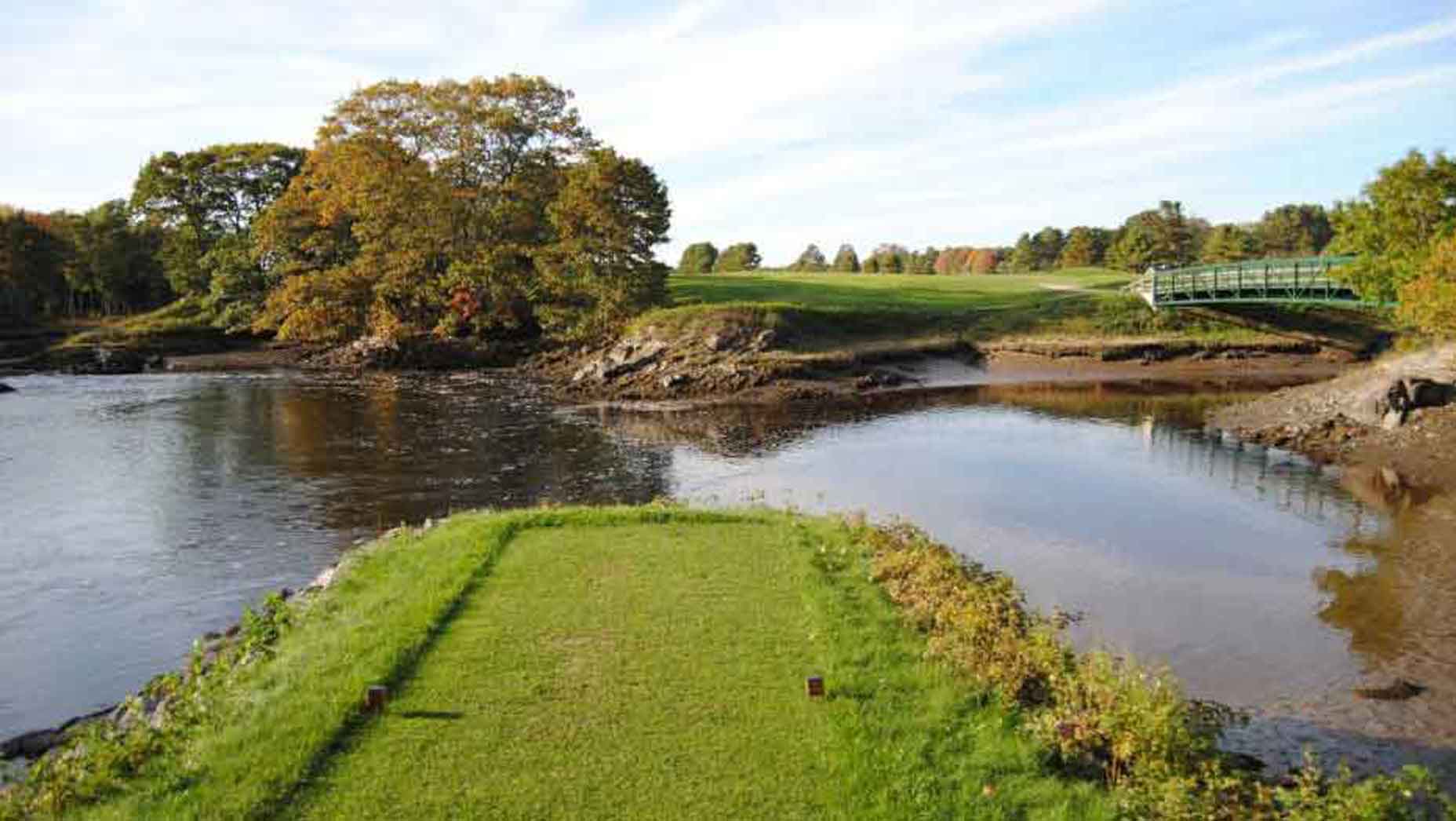
64. Cape Arundel
Kennebunkport, Maine
Walter Travis, 1920
At just less than 6,000 yards, this is the shortest course to make our list. If you think that means that the design must therefore have perfectly placed hazards, superb greens and excellent overall presentation, you would be correct.
66. Bethpage (Red)
Farmingdale, N.Y.
A.W. Tillinghast, 1936
The Black Course casts such a long, daunting shadow, it’s amazing any grass can grow on its four sibling courses at Bethpage State Park. But it does, especially on the Red Course, which more than holds its own. There’s no warning sign at the 1st tee like at the Black, the rough is friendlier and the bunkers are less dramatic (except for the fistful that split the fairway on the par-4 13th), but locals know none of that makes the Red a pushover.
69. Cove Club at Cabo del Sol
Cabo San Lucas, Mexico
Jack Nicklaus, 1994
Opened in 1996, the Cove Club was immediately hailed as a world top 100 course, in part because of its dazzling four-hole finish. Now, the course ends on the former 16th, a luscious downhill two-shotter that finishes so close to the Sea of Cortez that the green almost appears to be in the water. Two new holes were built inland, and the core of the course remains as strong as ever.
70. Warren Course at Notre Dame
Notre Dame, Ind.
Bill Coore/Ben Crenshaw, 2000
Two superlative examples of flat land architecture are found at the 9th and 13th holes. At the 185-yard 9th, a bunker 20 yards short of the green fools players into coming up short. Another great bunkering scheme is on the 433-yard 13th, where the fairway breaks sharply left around a pair of bunkers 60 yards shy of the green. The finishing holes descend into more wooded, tumbling land, including the picturesque 16th, where you hit over Juday Creek.
71. Twin Dolphin
Cabo San Lucas, Mexico
Fred Couples/Todd Eckenrode, 2018
This high-end, lay-of-the-land gem spreads gracefully atop a desert bluff, with Sea of Cortez vistas everywhere you turn. Arroyos run in all directions, flanking some holes, crisscrossing others, though forced carries are rare and the broad-shouldered fairways make it hard to lose a ball. The turf is bouncy, like a links, and the ground game requirements add to the fun. This is golf as pleasure not as punishment, a point underscored by the pair of comfort stations you pass along the way.
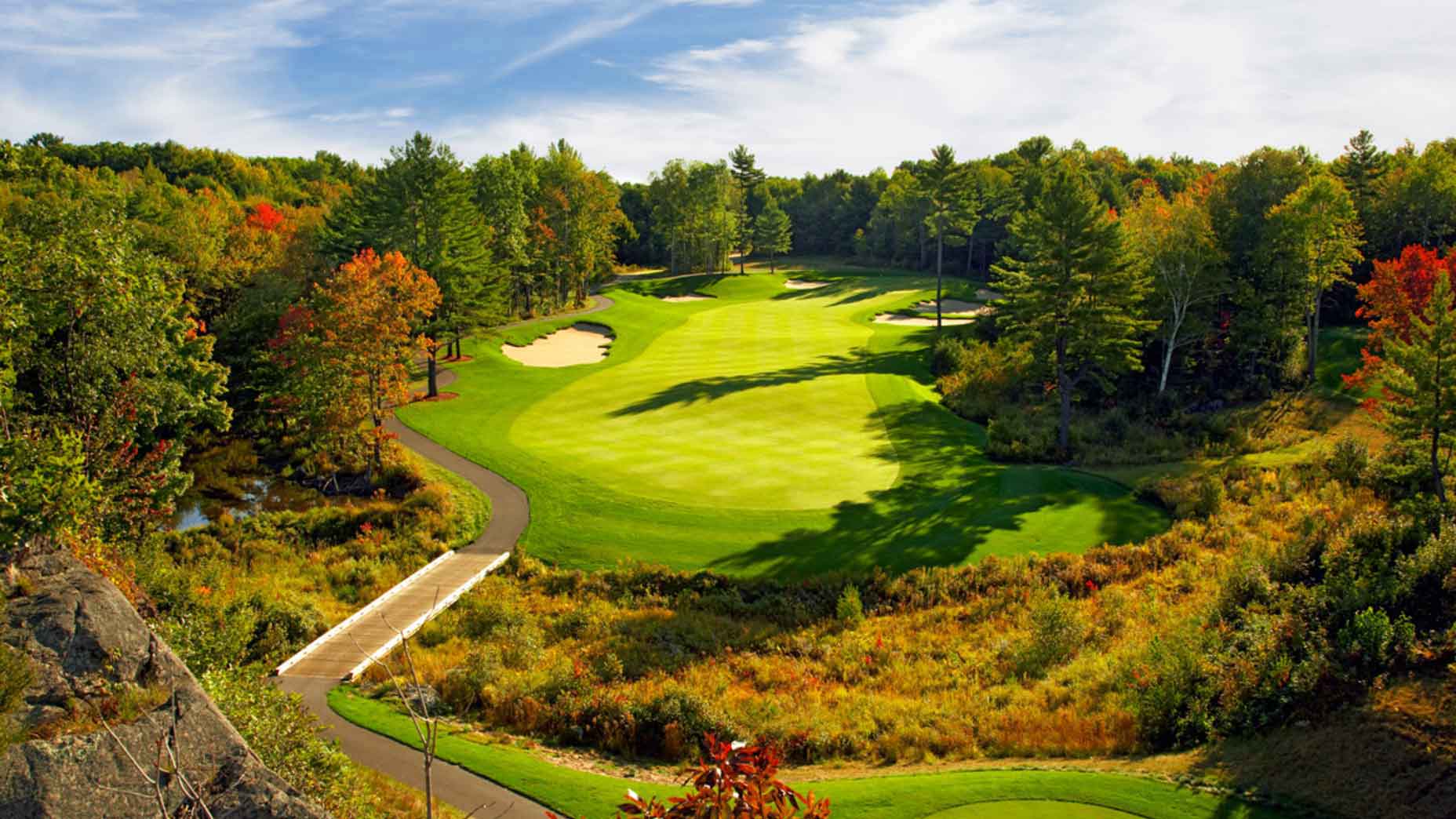
74. Muskoka Bay
Gravenhurst, Ontario, Canada
Doug Carrick, 2007
Doug Carrick incorporated the rocky outcroppings that are part of the Canadian Shield into the layout along with significant elevation changes, which start on the opening hole. Wetlands also come into play, like off the tee on the par-4 9th, where rocks tightly squeeze the opening to an elevated green.
76. Barona Creek
Lakeside, Calif.
Todd Eckenrode, 2001
Set into a hillside, Barona marks a departure from the tree-lined layouts that proliferate around San Diego. Its footprint is vast and open, with wide, firm fairways that place a premium on taking the right angle of attack. The greens, generously sized with plenty of movement, were re-turfed last year as part of a renovation that also overhauled the bunkers.
77. Four Seasons, Punta Mita (Pacifico)
Nayarit, Mexico
Jack Nicklaus, 1999
Listed as hole 3B on the Punta Mita Pacifico scorecard, the Tale of the Whale is an optional par-3 that plays to an island green, set amid a natural black-rock formation, some 190 yards of the coast. If your tee shot finds dry land, getting to your ball takes a bit of time, as it requires a ride on a motorized dinghy. But no worries. No one is in a rush. Located in what was once a sleepy fishing village, Punta Mita is all tropical tranquility, a sun-splashed resort course with wide, friendly fairways, swaying palm trees and ocean views.
78. RTJ Golf Trail at Grand National (Links)
Opelika, Ala.
Robert Trent Jones Sr., 1992
The conditioning is pure, the vistas are sublime, and the course, the strongest layout on the Robert Trent Jones Trail, is a delightful, varied test. If you time the visit right, you can follow up your round with another top-notch form of outdoor entertainment: The Auburn football stadium is nearby.
80. Omni Bedford Springs Resort (Old Course)
Bedford, Pa.
Spencer Oldham, 1895/A.W. Tillinghast, 1912/Donald Ross, 1923/Ron Forse, 2007
Fans of old-school architecture will love this design about two hours east of Pittsburgh. The course’s design roots, strengthened by a Ron Forse restoration, extend back more than a century with multiple Hall of Famers leaving their stamps. Tillie was especially fond of the short par-3 14th, with distinctive mounding left of the green.

81. Royal Blue at Baha Mar
Nassau, Bahamas
Jack Nicklaus, 2017
Across the street from the sprawling Baha Mar resort, this Nicklaus design, on the former site of Cable Beach Golf Club, serves up two distinct nines. The front side demands accuracy, as it winds its way around bunkers and salt-water ponds. The less taxing back nine has wider corridors and imaginative, topsy-turvy fairways framed by limestone outcroppings.
82. Talking Stick (O’odham North)
Scottsdale, Ariz.
Bill Coore/Ben Crenshaw, 1999
Bill Coore and Ben Crenshaw took a flat parcel of desert landscape and built a grassland-fringed layout where the fairways are wide and taking the proper angles is rewarded. This is the antithesis of desert-style target golf. The greens are slightly elevated; miss those, and your short game will be tested.
83. Firestone (South)
Akron, Ohio
Robert Trent Jones Sr., 1969
Few courses boast more big-time tournament history: The South course has played host to three PGA Championships (most recently in 1975), the WGC-Bridgestone Invitational (won eight times by Tiger between 1999 and 2013) and the current Bridgestone Senior Players Championship. The stallion winners at this frank, well-presented examination speak to its high shot qualities.
85. Pfau Course at Indiana University
Bloomington, Ind.
Steve Smyers, 2020
A bright spot for Midwest golfers last year came in the form of this course opening on IU’s Bloomington campus. Rave reviews quickly followed for a design that features tree-lined fairways on the more secluded front side and a wide-open feel on the back. The course can extend to a meaty 7,908 yards (leave that for the college team!), but every green, save the 18th, accepts run-up shots.
86. Chileno Bay
Cabo San Lucas, Mexico
Tom Fazio, 2014
A former high-end private course that still feels and plays like one, this Tom Fazio stunner offers spectacular elevation changes and sweeping views of the Sea of Cortez. The flatter front nine plays closer to the water before the course climbs into the jagged desert hills.

89. Oak Quarry
Riverside, Calif.
Gil Morgan/Schmidt Curley Design, 2000
Built on the remnants of a rock quarry, this hard-edged beauty seizes on the drama of its surroundings. Sheer walls of white stone serve as backdrop throughout the course, which moves through sizable shifts in elevation. Since no homes encroach, there is nothing to impede the vistas, and little to distract from one of the most striking man-made settings in the game.
90. Puntacana (Corales)
Punta Cana, Dominican Republic
Tom Fazio, 2010
Though the Devil’s Elbow doesn’t sound as scary as other course features named after Lucifer’s anatomy, it’s plenty daunting. The moniker refers to the closing three-hole stretch at this PGA Tour host site, which culminates along the cliffs, with a forced carry over the Bay of Corales. It’s a memorable finish to a routing that begins in more conventional fashion, its front nine cut through the flat, inland grounds of the Puntacana Resort.
94. Blackhawk
Spruce Grove, Alberta, Canada
Rod Whitman, 2003
Architect Rod Whitman isn’t afraid to reshape the land when a site calls for it. But Whitman barely moved any dirt at all when he built Blackhawk on the banks of the North Saskatchewan River. The opening nine plays up to a plateau, followed by a brilliant back side that returns golfers to the river valley.
96. Stoatin Brae
Augusta, Mich.
Eric Iverson, Don Placek, Brian Schneider, Brian Slawnik, 2016
The uphill drive off the highway to the clubhouse gives nothing away about what you’re about to experience. Much of the front nine traverses a plain, and then, starting at 10, the land goes crazy — a topsy-turvy six-hole stretch that you won’t soon forget. It is one of the best stretches on this entire list.
97. Old Waverly
West Point, Miss.
Bob Cupp, 1988
This modern Mississippi classic was only 11 years old when it burst onto the scene as the host of the 1999 U.S. Women’s Open. Since then, Old Waverly has held a U.S. Women’s Amateur and six U.S. Senior Open qualifiers, solidifying its status as one of the South’s golfing jewels. The always well-conditioned layout winds around five lakes, and all that water was used to create risk-reward opportunities throughout the course.

98. Memorial Park
Houston
John Bredemus, 1936/Tom Doak/Brooks Koepka, 2019
Tom Doak’s $18.5 million renovation -— with an assist from Brooks Koepka — improved irrigation and modernized the course, making it playable for the public and challenging for pros. The fairways are generous, and Doak left only 19 bunkers on the course. But his target-oriented design rewards precision, and the back nine is built for scoring swings and tournament drama.
99. Black Mesa
Espanola, N.M.
Baxter Spann, 2003
Situated on the Santa Clara Pueblo 30 minutes north of Santa Fe, this burly design boasts numerous classic design features: blind tee shots, false fronts, central hazards and greens that run from front to back.
100. Hawktree
Bismarck, N.D.
Jim Engh, 2000
This Midwestern marvel rambles through glacier-carved land near the Missouri River, forcing players to contend with high plains winds and water that’s in play on 11 holes. When you arrive at Hawktree, the first thing you notice are the sweeping prairie vistas — 14 holes are visible from the clubhouse. You’ll also notice the trademark bunkers, filled with black coal slag instead of white sand.
